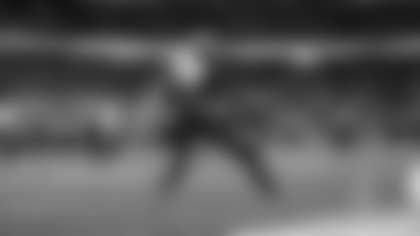**

Cardinals Stadium Roof Lift Set for Weekend: Heaviest Lift of its Kind Ever Accomplished in North America**
Crews are prepared to hoist the major portion of the retractable roof at the new Cardinals Stadium this weekend in what will be the largest single roof lift in North America. The center portion of the retractable roof weighing 5,500 tons will be hoisted to the top of the stadium.
The four-day process begins today (Friday) and is expected to be finished by Monday. The most dramatic part of the roof lift is when the structure is raised 156 feet above the stadium floor. Weather and other variables can affect the speed of the process which is carefully controlled by computers.
The 11 million pound roof section weighs the equivalent of 14 Boeing 747 airplanes and is being accomplished with eight strand lifting units capable of hoisting 990 tons each. The total capacity of the lifting system is 7,900 tons or enough to raise the Eiffel Tower.
The roof is set on the two giant Brunel trusses which are 87-feet tall and span 700 feet long. The corner of each Brunel truss is set into a channel on each of four Super Columns which were specifically engineered and designed to perform the lift. The lift is being managed by Hunt Construction Group, the nation's leading sports facility builder that has managed construction of four of the six retractable-roof stadiums in the U.S. including Bank One Ballpark in Phoenix.
The roof lift comes as the construction project passes the 50 percent completion mark, continuing to be on schedule for its opening in August of next year.
The Process
On Friday, workers begin to disconnect the Brunel trusses from the support posts on which they have been resting while the retractable roof was being assembled. Also, supporting guy wires are disconnected and the lift team raises the roof an initial 18 to 24 inches. Then the entire roof assembly is allowed to settle. Teams conduct inspections and tests throughout this time.
After inspectors give the go-ahead, the carefully planned, computer-controlled ascent of the roof begins. There will be frequent stopping points as inspection teams review progress. The roof assembly will be raised about 120 feet to a position about 156 feet above the stadium floor.
Concluding the lift, ironworkers will install transfer girders in the notches at the top of the Super Columns. The entire roof assembly will be lowered 18 to 24 inches, coming to rest on the transfer girders.
Future Milestones
March to July – Roof closure
Work begins to complete closure of the roof. While Brunel trusses support the retractable roof panels, a mix of structural steel, decking, rubberized roofing and a waterproof fabric will surround those retractable panels. The translucent fabric will allow natural light to pass through the roof while keeping heat and water out and the cool air in. The roof is expected to be complete in July.
May – Lower seating construction begins
The lower reaches of the stadium's interior bowl, the part of the stadium nearest the field, starts construction. This includes installation of pre-cast concrete risers on which the lower bowl seats will rest. Work lasts through September.
July – Installation of the stadium's event seating begins
Seating installation begins while work continues on masonry, electrical and mechanical rough-ins and lighting.
November – Exterior walls complete
Exterior walls of the stadium are completed, making the stadium weather tight. At this point, dry wall installation, painting, millwork and concession construction begins in the interior.
April 2006 – Field tray complete
Completion is expected on the unique moveable tray that will contain the stadium's football turf. The huge tray will be built in its entirety outside the stadium and then the grass sod will be installed. It will not be rolled into the stadium from its south end until June. The field will be rolled inside the stadium only for game days, otherwise being kept outside where it can get plenty of air and sunshine. The turf tray will roll along steel rails on more than 400 steel wheels. Workers will have access to the wheels and the underside of the tray for maintenance and repair from a special work trench located near the southern end of the stadium.
August 2006 – Stadium complete and ready for occupancy in time for the Cardinals' season.
January 2007 – Fiesta Bowl and BCS National Championship
January 2008 – Super Bowl XLII
The retractable roof is just one of the unique features of the stadium which will be the host of the Arizona Cardinals, the Tostitos Fiesta Bowl, the 2007 BCS Championships and the 2008 Super Bowl.
The 63,000-seat stadium will be able to be expanded to 73,000 seats and will feature North America's first roll-out natural grass field. It will open in August of next year.
Cardinals Stadium Project Team
o Owner: Arizona Sports and Tourism Authority
o Tenants: Arizona Cardinals, Tostitos Fiesta Bowl
o Design Builder: Hunt Construction Group
o Architects: HOK S V E in collaboration with Eisenman Architects
o Roof Structural Engineer: Walter P. Moore
o Stadium Structural Engineer: TLCP Structural
o Roof Steel Fabricator/Erector: Schuff Steel
o Roof Mechanization Contractor: Uni-Systems





